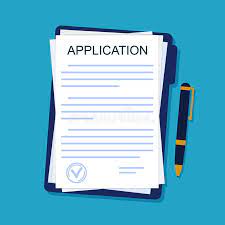Application Form
An application form gathers data from people or companies that want to have some placement. It is used to gain employment, find an apartment, get a loan, apply for college, or get a booth at an event. Application form owners could be private individuals, educational institutions, banks, landlords, etc.
A Guide To Making Your First Application Form
Application forms may either be online or offline. It asks for your information like name, address, email, contact number, and other relevant details.
If you are making your first application form, we've prepared a quick guide for you.
Best Practices When Creating Application Forms Online

To provide a seamless experience for form users and increase completion rates, you should take note of these tips.
Ask Only For The Necessary Information
When gathering data, make sure that you're only asking for the details you need. For instance, only ask for employee-related information if you're a company and you want to assess applicants. Likewise, it can guarantee that users will complete the form. It will prevent them from raising any doubts about the integrity of the web form and the organization behind it.
Create Appropriate Form Field Items
When you're editing an application form template or building a new one from scratch, tailor your question and field types to the kind of answer you intend to receive.
If you want a visitor to answer the question using their own words, you can use a short or long-form field. You may use Radio Buttons or Dropdowns if you have multiple-choice questions and only need one answer. Meanwhile, you may opt for checkboxes if you need to receive more than one answer.
Use Placeholder Text For Further Explanation
If the answer on your form requires a particular format, you can put a placeholder text to show a sample answer. For instance, you can specify how dates are formatted like "MM/DD/YYYY."
Keep Form Pages Brief
Try to divide the form into short sections as much as possible to display only a few things at a time. You don't want to overwhelm your applicants. They are more likely to complete the form when there's a manageable amount of text on the screen.

Show Them A Success Page For Confirmation
Businesses typically send confirmation messages upon receipt of an application form. However, some emails get into the spam folder instead of the inbox. Instead of losing communication, it is recommended to use Success Page to convey your message instantly.
Use Application Form Labels
You may place a label above or next to the form field to let the respondent know the purpose of that area. Optimize these labels by keeping them simple.
Use An Application Form Template That is Mobile-Friendly
Since many candidates will answer your online form from their smartphones, the web form must adjust based on the size of the gadget. It will boost the applicant's completion rate.
You can further increase its mobile-friendliness by breaking long-form pages into shorter ones to lessen scrolling.
It would be ideal to do multiple choices, checkboxes, and quick answers, as typing on a tiny keyboard can be difficult. Also, do not use large images as they take a long time to load.
Be Clear About Your Company Or Organization's Privacy Policy
Inform the applicant about the specific rules regarding your data collection. State that the information you will collect from them will not be sold or given away to other people or companies.
If there are people sending application forms from the EU, ensure that your online form is compliant with the General Data Protection Regulation.
Allow for File Uploads Online Job Application Form
It can be unpleasant for applicants who have previously prepared the paperwork for their employment and education histories to re-enter that information in an application form. Rather than filling out form fields one by one, provide candidates the option of uploading documents or directing them to an online address where they can be found.
Optimize Your CTA
Create a catchy call to action to encourage more people to complete their forms. Use colors that stand out and action text like "Send" or "Apply Now."
Want to Create Your Application Form?
FormBot offers a drag and drop builder to help you create online application forms easily. Please choose from our library of templates to complete a form that reflects your business, event, or organization.
We ensure the security of your data so you and your respondents will have confidence in the integrity of the data collection process. Get started today with our free trial.
Related Resource Suggestion:
Letter of Recommendation Template